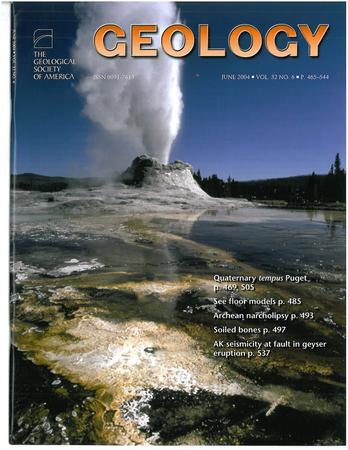平行层缝充填方解石U-Pb定年对页岩流体超压演化的直接约束
IF 4.6
1区 地球科学
Q1 GEOLOGY
引用次数: 0
摘要
流体超压是沉积盆地中普遍存在的现象,生烃引起的超压引起了广泛的关注。然而,缺乏直接的时间约束,并且进化过程仍然知之甚少。本文通过将原位U-Pb测年与层状平行方解石脉流体包裹体分析相结合,为四川盆地页岩古流体压力演化提供了绝对的年代学约束。结果表明,随着热成熟度的增加,深埋期生烃超压呈两阶段指数型演化。在干酪根生气阶段(236 ~ 156 Ma, Ro[镜质组反射率]= 1.3% ~ 2.0%),流体压力缓慢升高,压力系数逐渐减小。随后,在埋藏晚期,流体压力和压力系数均急剧增加,增幅达3倍,并伴有油裂解气生成(148 ~ 84 Ma; Ro >2.0%)。强生烃作用加上低渗透率,使得流体超压从深埋到隆升一直持续至今。研究结果表明,在构造静止条件下,仅由生烃驱动的页岩流体压力以指数方式逐步增加,而不是连续的非线性趋势,即使在隆升期间也基本保持不变,除非受到断裂的破坏。这一成功的应用凸显了绝对地质年代学约束在完善沉积盆地流体演化模型方面的广阔潜力。本文章由计算机程序翻译,如有差异,请以英文原文为准。
Direct constraints on shale fluid overpressure evolution from U-Pb dating of bed-parallel fracture-filling calcite
Fluid overpressure is a common phenomenon in sedimentary basins, and overpressure induced by hydrocarbon generation has attracted considerable attention. However, direct temporal constraints are lacking, and the evolutionary process remains poorly understood. Here, we provide absolute chronological constraints on the paleo−fluid pressure evolution in shales of the Sichuan Basin, China, by integrating in situ U-Pb dating with fluid inclusion analysis of bed-parallel calcite veins. Our results reveal that overpressure due to hydrocarbon generation during deep burial evolved in a two-stage, stepwise exponential manner with increasing thermal maturity. During the kerogen gas generation phase (236−156 Ma; Ro [vitrinite reflectance] = 1.3%−2.0%), fluid pressure increased slowly, and the pressure coefficient decreased gradually. Subsequently, during the advanced burial stage, both fluid pressure and the pressure coefficient increased abruptly by up to threefold, associated with oil-cracking gas generation (148−84 Ma; Ro >2.0%). Strong hydrocarbon generation, combined with low permeability, enables fluid overpressure to persist from deep burial through uplift to the present day. Our findings show that under tectonically quiescent conditions, fluid pressure in shale driven solely by hydrocarbon generation increases in a stepwise exponential manner rather than a continuous nonlinear trend and remains largely preserved even during uplift unless disrupted by faulting. This successful application highlights the broad potential of absolute geochronological constraints for refining models of fluid evolution in sedimentary basins.
求助全文
通过发布文献求助,成功后即可免费获取论文全文。
去求助
来源期刊

Geology
地学-地质学
CiteScore
10.00
自引率
3.40%
发文量
228
审稿时长
6.2 months
期刊介绍:
Published since 1973, Geology features rapid publication of about 23 refereed short (four-page) papers each month. Articles cover all earth-science disciplines and include new investigations and provocative topics. Professional geologists and university-level students in the earth sciences use this widely read journal to keep up with scientific research trends. The online forum section facilitates author-reader dialog. Includes color and occasional large-format illustrations on oversized loose inserts.
 求助内容:
求助内容: 应助结果提醒方式:
应助结果提醒方式:


